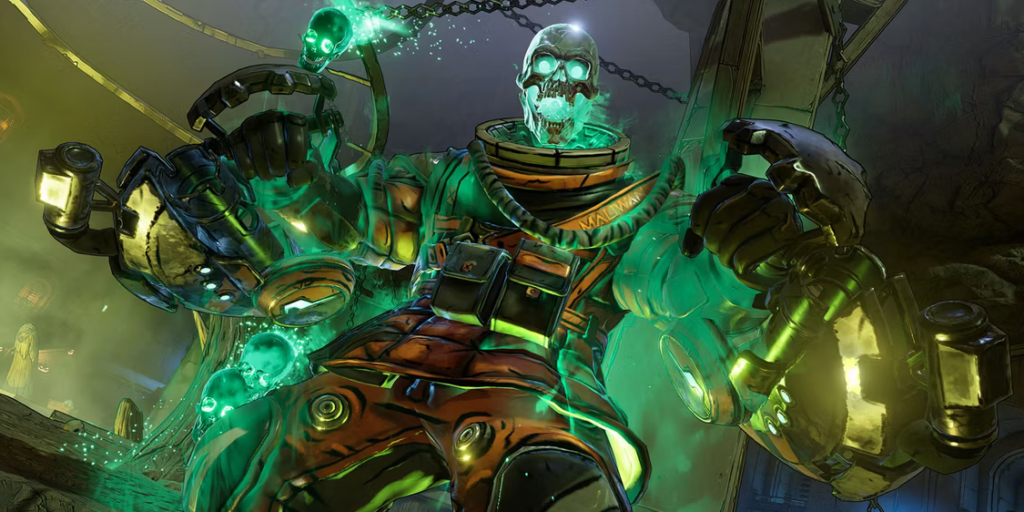Forte and Naavik are teaming up to provide a stream of deep dives geared toward helping game developers better build, launch, and scale successful and sustainable blockchain games. Today’s essay — designed to help developers know where to begin — is just the start, and is written by none other than Matt Dion.

GM, game developer!
If you’ve been following games industry news closely over the past year, you’ll know that one topic has undoubtedly captured the attention of developers, executives, and players alike: blockchain gaming.
For many of us, this journey of exploration begins with a lot of basic questions, like “WTF is a blockchain?” or “Why are people spending millions of dollars on .JPEGs?” Given that you are reading an article from Forte and Naavik and presumably did not arrive here by accident, we will assume that you have answered many of these beginner questions for yourself already (but don’t worry if you haven’t; there will be additional resources later on that will allow you to dive deeper on these topics and more). Rather, this piece will aim to address many of the fundamental questions facing game developers seeking to go further down the web3 rabbit hole.
You may be a games industry lifer seeking to understand a new trend. Perhaps you’re an entrepreneur looking to innovate in a nascent field. Or maybe you’re a mid-career games industry professional, equal parts curious and confused, wondering whether you’ve already missed the boat riding a wave of new innovation and discovery. Regardless of what brings you to blockchain gaming, it’s important to take the time to learn and understand the space due to its many peculiarities and unique aspects.
Remember, those of us who have been active in web3 for many months or years now were also once in your shoes. The learning curve can seem nearly vertical when just starting out. Simply trust that you will grok it all in time and that this piece will be one of many stepping stones along your path.
To aid you in beginning your blockchain gaming journey, the experts at Naavik and Forte have come together and prepared a set of five fundamental questions that, when considered carefully and answered thoughtfully, will lay the foundation for you to build a great game upon.
The answers to these questions will help guide you on your web3 journey. After you’ve run through the questions yourself, we encourage you to take them back to your team, discuss them carefully as a group, and consider a variety of perspectives; after all, it’s dangerous to go alone, and (as you will soon learn) there are some risks associated with blockchain game development that can easily trip up an unprepared development team.
With all that said, let’s get you started on your journey to blockchain gaming success!
Question 1: Are You Using a Blockchain for the Right Reasons?
The first and most important question to ask yourself as an aspiring web3 games developer is “Why?”
Blockchain technologies can be leveraged in myriad use cases, many of which are still actively being explored. Web3 (the overarching term for a decentralized internet built upon blockchains) is reshaping not only the games industry, but also music, finance, sports, and much more. Given that gaming already sits at the intersection of several other creative, technical, and business macro trends (e.g. the Creator Economy, cloud gaming, UGC and modding, instant games, etc.), it is imperative for leaders in the space to understand what it is they’re getting themselves into and why. The opportunity cost is just too large to ignore.
Fundamentally, the changes being driven by web3 can be boiled down to a discrete set of competencies from which nearly every recent innovation in the space is derived. Most prominently, these include verifiable ownership, immutability, decentralization, and security. When applied to games ecosystems, these concepts can be further distilled to examples such as ownership and chain-of-custody of digital assets, immutable records of game activities, or fully transparent game operations (answering player questions such as “what are the true odds of receiving this reward?”, or “how are developers spending my money?”), among others.
Collectively, web3 enables what’s known as “Community Economics”: a system of cooperative economic relationships between users, developers, investors, and other participants, spanning both the physical and digital worlds in an open, trustless, and permissionless manner. In other words, a shift from centralized, tightly-controlled experiences to decentralized, open economies where no single party owns the full tech stack.
There are many reasons to aspire to create a games business that can deliver on this promise. One might argue that this sort of community-driven operation creates a healthier two-way relationship between developers and players. Even if you don’t subscribe to that school of thought, there are benefits to empowering players with ownership of their efforts, as opposed to locking their earned or purchased items into a walled garden. There are also important philosophical reasons for wanting to operate games more transparently, instilling a sense of fairness, trust, and security in the player-developer relationship.
In many ways, Community Economics boils down to one key word: cooperation. Whereas traditional games today can be described as one-sided, at best (or even predatory, at worst), the winners in blockchain gaming will embrace cooperation with the many players, gaming communities, investors, and other stakeholders participating in their ecosystem as a key element to success. In other words, a rising tide can lift all boats in blockchain gaming.
A critical component to achieving sustainable Community Economics is interoperability. Interoperability allows for the exchange of information between multiple blockchains and guards against the establishment of the sorts of walled gardens that players often encounter in web2 gaming. After all, having some games on Ethereum, others on Solana, yet more on BSC, and so on is really not that different from having Playstation or Xbox console exclusives. As developers, you are effectively limiting your total addressable market by locking your game into one platform.
Interoperability is a boon to the entire community of blockchain gaming:
- For developers, interoperable games allow for user acquisition and marketing across a variety of blockchain ecosystems. It also enables payments in multiple cryptocurrencies. By ascribing value to players’ digital assets, developers provide incentives for these players to join their network.
- For players, interoperable games enable freedom of choice. Players can interface with the game through a variety of digital wallets, and access liquidity for assets earned in that game regardless of blockchain.
True interoperability is easier said than done and will take many years to play out in various ways, but it’s nevertheless an inspiring idea that many in the ecosystem are aiming to build toward.
Another benefit of blockchain gaming is composability. Often mentioned in the same breath as interoperability, composability is a property of blockchain development that allows anyone in a network to take existing applications or smart contracts and modularly build on top of them in new and interesting ways.
You may have heard composability referred to as “money legos” for this reason. Different smart contracts can be swapped out and stacked together in a variety of ways to meet user requirements. This is a powerful concept that can enable faster development and iteration. To borrow a phrase from a16z general partner Chris Dixon, “composability is to software as compounding interest is to finance.”
Finally, it’s worth calling out that you don’t need a high falutin ideological explanation for wanting to leverage the blockchain. Maybe you just want to “buidl” and experiment and break stuff and iterate with a new set of technologies and tools. There’s nothing wrong with that, either.
To be clear though, there are some bad “why”s: using web3 as a gimmick to raise money more easily, to get rich quick, to give yourself a big cut of a token supply, and so on. As long as your “why” is rooted in building something great for the end user (even if just an experiment), we’re here for it.
Now, let’s talk about games!
Additional Reading:
- Into the Void: Where Crypto Meets the Metaverse (Naavik) - Link
- Animal Crossing: New Horizons and the Limits of Today’s Game Economies (Forte) - Link
- What is Web3, Anyways? (Wired) - Link
- The Creator Economy: How We Got Here, and Where We’re Headed (BITKRAFT) - Link
- Interoperability and composability within Ethereum (Linda Xie) - Link
Question 2: Is Your Web3 Game Designed for Success?
Many of today’s popular blockchain games have drawn their fair share of design criticism. They are frequently dismissed as outdated, half-baked, or simply not fun to play. In many cases, these are fair criticisms. Most blockchain games today lack the sophistication, depth, and polish that developers and players are accustomed to.
There are several reasons for this state of affairs, not least of which being that blockchain gaming is still in its infancy. In time, these games will improve and reach larger audiences as they streamline their user experience, adopt proven systems and mechanics, and – perhaps most importantly – learn to leverage blockchains as an integral part of their game design to create new genres and experiences that take advantage of the technology’s unique benefits.
How “on-chain” do you want your game to be?
There are a variety of options available to designers as it relates to the extent to which a game will actually utilize a blockchain. Some systems may be operated or recorded immutably on the blockchain, while others might remain centralized under the control of the development team.
Blockchains are very good at handling a specific set of problems, such as storing and securing data, authenticating transactions, preventing double-spending, and enabling machine consensus. These problems lend themselves most immediately to financial applications, which is a large part of why web3 has, until recently, been most closely associated with ICOs, meme coins, DeFi protocols, and other cryptocurrency-based ecosystems. Early blockchain games have also walked this path, with DeFi Kingdoms and Wolf Game being two prominent examples.
Blockchains are also well-suited to verifying ownership and chain-of-custody of digital assets. This is one reason why so many web3 games today revolve around collecting characters, ships, items, or land. However, not every system or mechanic can – or even should – utilize a blockchain.
To illustrate what a fully “on-chain” game might look like, consider the example of ChainFaces Arena. Part lottery ticket, part Squid Game, ChainFaces Arena was a time-limited experiment that gave users a one-time opportunity to submit their ChainFace NFTs into an “Arena” where it would “battle” with all other NFTs entered into the Arena over successive 15-minute rounds. At the conclusion of each round, a small percentage of participating NFTs were eliminated from the competition (by way of transfer to a locked smart contract), lost permanently to their previous owners. Surviving ChainFaces had the option to leave the Arena at any time with a small share of the remaining prize pool, which grew every round as more and more NFTs were eliminated. For every ten rounds survived, ChainFaces received a “scar”, permanently altering the NFT’s appearance. The game continued in this manner over the course of several weeks, with the eventual winner walking away with roughly $160,000 in ETH.
Nearly everything about ChainFaces Arena took place on the Ethereum blockchain. The NFTs were minted on the blockchain, and the “art” (a jumble of ASCII characters arranged to resemble a face) was generated entirely on-chain (whereas most NFTs rely on services like the IPFS network to host their artwork). The rules of the game itself were executed entirely by smart contracts: rounds were measured in blocks processed, not minutes, and the formula for determining the odds of elimination in each round was transparent in the smart contract’s code for all to see. Beyond the game’s website and Discord community, everything was processed on the Ethereum blockchain.
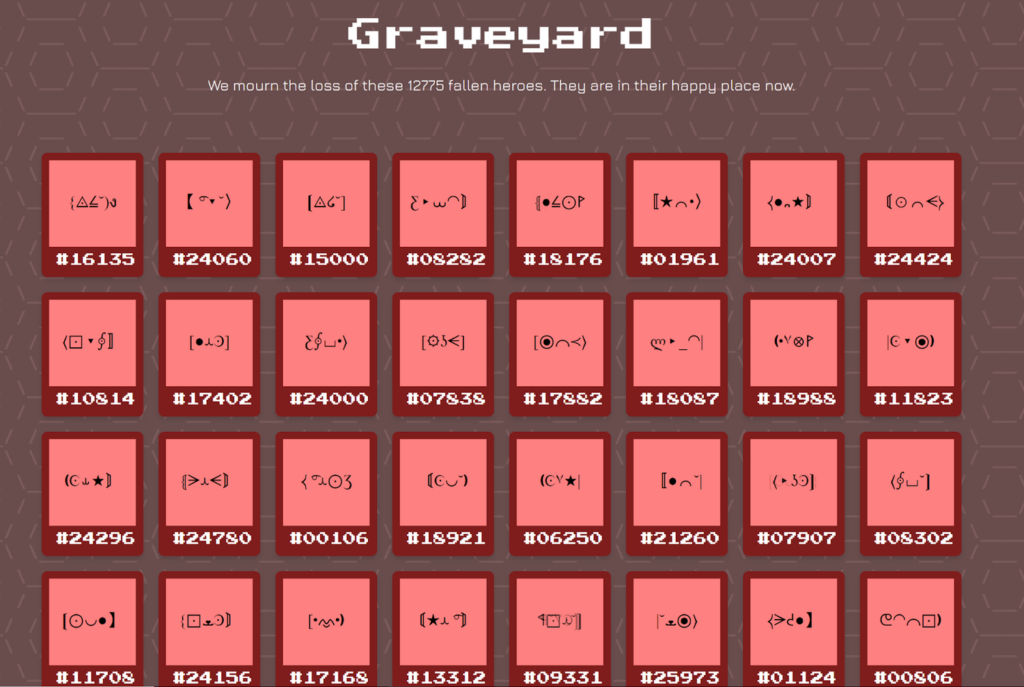
While ChainFaces Arena was a fascinating experiment from a game theory perspective, it is clearly not for everyone. You may be asking yourself if it can even be considered a “game” at all, as opposed to, say, gambling. Regardless of where you land on this question, ChainFaces Arena is an excellent illustration of what a fully on-chain experience can – and cannot – do.
Because of the limitations imposed by the Ethereum blockchain, much of the game was left to the players’ imaginations. There were no battle animations, fancy environments, or 3D assets. The rounds of the Arena were little more than numbers on a webpage. Despite this low fidelity presentation, players needed to pay top dollar to participate. Not only were the NFTs costly to mint (0.069 ETH, or ~$260 at that time), but users were also forced to pay high transaction fees (a.k.a. ‘gas fees’, in web3 parlance) of ~$50 to $100 or more when performing basic actions, such as submitting or withdrawing a ChainFace from the Arena, simply because the game was operated on the Ethereum blockchain where throughput can be costly.
Existing vs. Bespoke Games
Now that we have looked at a game that is maximally on-chain, let’s move to the other end of the spectrum and consider a more discrete application of blockchains to games: existing titles. Given how nascent blockchain gaming is, most assume that only new projects can be designed for web3. Yet there are ways to incorporate web3 technologies into established games, too.
The Ubisoft Quartz initiative is a prominent instance of an existing game incorporating web3 elements. While the community continues to be built out, it’s an example of how, even among AAA publishers, blockchain game loops can be adapted into existing titles.
Another example to point to is Thetan Arena, the web3 reincarnation of free-to-play MOBA Heroes Strike. WolfFun, the game’s developer, was able to use the ready-made framework of Heroes Strike as a launchpad for Thetan Arena, maintaining its IAP-driven free-to-play model on mobile devices while incorporating a separate NFT-driven gacha system via web browser.
In making this change, WolfFun was able to generate far greater downloads and (non-web3) IAP revenue than it ever did with its original incarnation – and over a far shorter period of time. In just 60 days, Thetan Arena saw 171% and 199% increases in downloads and revenue, respectively, compared to the entire lifetime performance of Heroes Strike.

Whether you are designing a bespoke game from scratch or seeking to incorporate elements of web3 into an existing title, there are many ways to utilize the blockchain to achieve the goals you laid out in Question 1.
The Importance of Design
We should also emphasize that these new technologies don’t suddenly invalidate the work of game designers. Talented designers will be more critical than ever for blockchain games. Questions of game balance, for example, take on much higher stakes when game items can be recorded immutably on the blockchain. Furthermore, perceptions of “paying for power” can become difficult to avoid as more and more game items are financialized.
Ultimately, the answer to Question 2 is still largely unrelated to blockchains. Best practices from game design – creating engaging loops, risk vs. reward trade-offs, content pacing, providing appropriate challenges, and so on – are all just as important in web3 games (if not moreso) as they are in traditional games. No amount of blockchain innovation will sustain a poorly designed game over the long term.
For these reasons and more, it is essential to ensure that your web3 game is designed for success. As blockchain games become increasingly linked to external economies, the importance of considering game design hand-in-hand with economic systems design cannot be overstated, which leads us to our third fundamental question. At their core, games are played for fun…but how should we change our approach if they’re now also being played with real economic stakes?
Additional Reading:
- What are Ethereum Gas Fees? (CoinDesk) Link
- Thetan Arena: The Mobile Game that Combines F2P and P2E (Deconstructor of Fun) - Link
- Blockchain game design: analysis of opportunities and design challenges (Derek Lau) - Link
Question 3: Is Your Web3 Game’s Economy Designed for Success?
With the advent of blockchain gaming, the role of economy designers has never been more critical to a project’s success. This is because web3 economies bridge the gap between in-game currencies and fiat currencies in ways heretofore unseen in the games industry. While gray markets for digital asset trading or gold farming still exist, there have never been fewer intermediaries between in-game and IRL economics.
As such, it is critical to carefully consider the various sources and sinks of your game’s currencies. How do players earn the different currencies in your game (be they cryptocurrencies or otherwise)? Where can they spend them? Which in-game behaviors are incentivized, and which are not?
At first glance, this seems quite similar to how you’d approach a “traditional” centralized game economy. However, if your web3 games project aspires to adopt a “play-to-earn” or “play-and-earn” economic model, the level of complexity increases significantly. This is because the sources and sinks suddenly extend beyond the limits of your game’s ecosystem and connect with the rest of web3: marketplaces, exchanges, and other applications can now access your token(s) for trading, swapping, staking, and other uses.
Every currency that can be “cashed out” or otherwise converted to some non-endemic token is now largely beyond the direct control of your game team, subject to the whims of the various players, investors, and speculators holding the asset. What this means in practice is that the real world value of your token(s) may swing wildly over the life of your game. This can lead to a cascade of secondhand impacts on player acquisition, install retention, sales of your NFTs (on both first- and third-party marketplaces), and general public sentiment regarding the viability of your product as a whole. If your token’s value suddenly drops 90%, how will your players react?
Understanding Your Community
Here it is worth pausing a moment to consider the audience of your blockchain game. Whereas traditional games developers typically focus on existing groups of gamers (e.g. “RPG players”, “Pokemon fans”, “puzzle solvers”, etc.), blockchain games developers often must also monitor how their games are being received by investors and earners, too. While these three groups are all distinct and have their own peculiarities, they are also inextricably linked. If market forces or a strong competitor game suddenly pull earners away from your title, the players and investors may soon follow suit. To further complicate matters, these three motivations will overlap and collide in different ways for each participant in your game’s economy. Some participants may be motivated primarily by fun, with a lesser interest in turning a profit, while others may be entirely driven by the bottom-line.
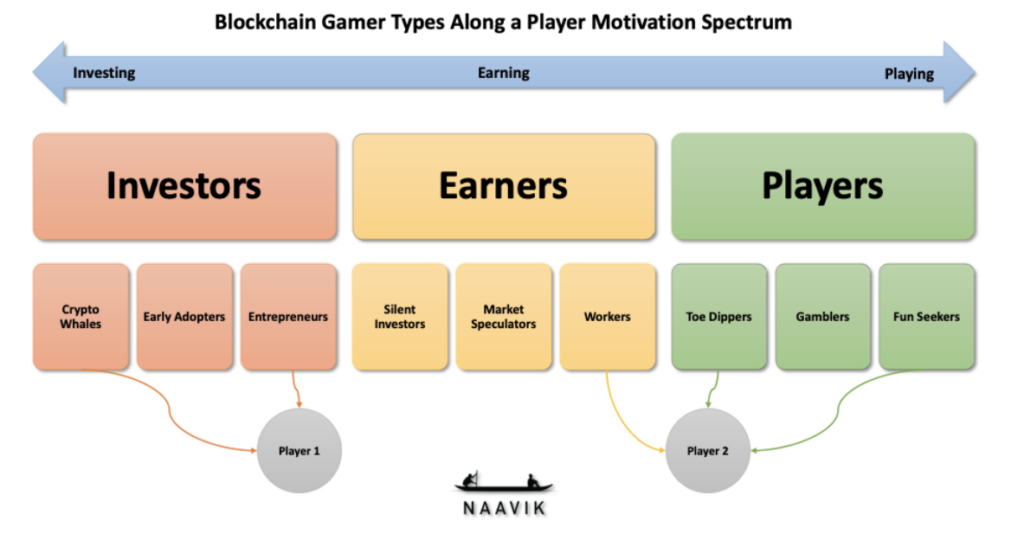
Winning web3 games businesses will think through these considerations carefully before proceeding in earnest. So called “tokenomics” – the defining qualities of a cryptocurrency token – is critical to nail early in your web3 exploration. Factors such as the allocation and distribution of tokens, overall supply, inflationary or deflationary forces, and additional ownership benefits conferred (such as governance or intellectual property rights) must all be weighed carefully through the lens of players, investors, and earners alike.
It is important that your design leaders work hand-in-hand with your business leaders at this stage, as the impacts stemming from economic design decisions can have potentially far-reaching implications.
Designing for Sustainability
A robust game economy requires constant care and attention. Given the potential added influences of external market forces, it is crucial to design your sources, sinks, and tokenomics sustainably.
Many projects in today’s blockchain gaming market are branding themselves as “play-to-earn” (P2E), but we must not overlook the fundamental economics behind these products. If more people are taking money out of a game economy than they are putting into it, the ecosystem is fundamentally unsustainable.
https://platform.twitter.com/embed/Tweet.html?dnt=false&embedId=twitter-widget-0&features=eyJ0ZndfdGltZWxpbmVfbGlzdCI6eyJidWNrZXQiOlsibGlua3RyLmVlIiwidHIuZWUiLCJ0ZXJyYS5jb20uYnIiLCJ3d3cubGlua3RyLmVlIiwid3d3LnRyLmVlIiwid3d3LnRlcnJhLmNvbS5iciJdLCJ2ZXJzaW9uIjpudWxsfSwidGZ3X2hvcml6b25fdGltZWxpbmVfMTIwMzQiOnsiYnVja2V0IjoidHJlYXRtZW50IiwidmVyc2lvbiI6bnVsbH0sInRmd190d2VldF9lZGl0X2JhY2tlbmQiOnsiYnVja2V0Ijoib24iLCJ2ZXJzaW9uIjpudWxsfSwidGZ3X3JlZnNyY19zZXNzaW9uIjp7ImJ1Y2tldCI6Im9uIiwidmVyc2lvbiI6bnVsbH0sInRmd19zaG93X2J1c2luZXNzX3ZlcmlmaWVkX2JhZGdlIjp7ImJ1Y2tldCI6Im9uIiwidmVyc2lvbiI6bnVsbH0sInRmd19jaGluX3BpbGxzXzE0NzQxIjp7ImJ1Y2tldCI6ImNvbG9yX2ljb25zIiwidmVyc2lvbiI6bnVsbH0sInRmd190d2VldF9yZXN1bHRfbWlncmF0aW9uXzEzOTc5Ijp7ImJ1Y2tldCI6InR3ZWV0X3Jlc3VsdCIsInZlcnNpb24iOm51bGx9LCJ0ZndfbWl4ZWRfbWVkaWFfMTU4OTciOnsiYnVja2V0IjoidHJlYXRtZW50IiwidmVyc2lvbiI6bnVsbH0sInRmd19zZW5zaXRpdmVfbWVkaWFfaW50ZXJzdGl0aWFsXzEzOTYzIjp7ImJ1Y2tldCI6ImludGVyc3RpdGlhbCIsInZlcnNpb24iOm51bGx9LCJ0ZndfZXhwZXJpbWVudHNfY29va2llX2V4cGlyYXRpb24iOnsiYnVja2V0IjoxMjA5NjAwLCJ2ZXJzaW9uIjpudWxsfSwidGZ3X2R1cGxpY2F0ZV9zY3JpYmVzX3RvX3NldHRpbmdzIjp7ImJ1Y2tldCI6Im9uIiwidmVyc2lvbiI6bnVsbH0sInRmd192aWRlb19obHNfZHluYW1pY19tYW5pZmVzdHNfMTUwODIiOnsiYnVja2V0IjoidHJ1ZV9iaXRyYXRlIiwidmVyc2lvbiI6bnVsbH0sInRmd19zaG93X2JsdWVfdmVyaWZpZWRfYmFkZ2UiOnsiYnVja2V0Ijoib24iLCJ2ZXJzaW9uIjpudWxsfSwidGZ3X3Nob3dfZ292X3ZlcmlmaWVkX2JhZGdlIjp7ImJ1Y2tldCI6Im9uIiwidmVyc2lvbiI6bnVsbH0sInRmd19zaG93X2J1c2luZXNzX2FmZmlsaWF0ZV9iYWRnZSI6eyJidWNrZXQiOiJvbiIsInZlcnNpb24iOm51bGx9LCJ0ZndfdHdlZXRfZWRpdF9mcm9udGVuZCI6eyJidWNrZXQiOiJvbiIsInZlcnNpb24iOm51bGx9fQ%3D%3D&frame=false&hideCard=false&hideThread=false&id=1486798005969764357&lang=en&origin=https%3A%2F%2Fnaavik.co%2Fdeep-dives%2Fgetting-started-blockchain-games&sessionId=d5a3a6eb6c7500dfd78146e62520e5e7e8c262dd&theme=light&widgetsVersion=a3525f077c700%3A1667415560940&width=550px
One way to make your economy more sustainable is to separate liquidity tokens (i.e. those that can be converted to non-endemic currencies) from other in-game currencies (e.g. prestige tokens, reputational tokens, “soft” currencies, etc.). While not a perfect solution, this delineation will further insulate your in-game economy from external market forces. Additionally, it helps to proactively address concerns of favoritism towards those with larger bankrolls.
Another critical consideration when planning out your game’s tokenomics is utility. External movements in a token’s price will ultimately be influenced by its perceived value, which can be further decomposed into hedonic and functional values (see below).
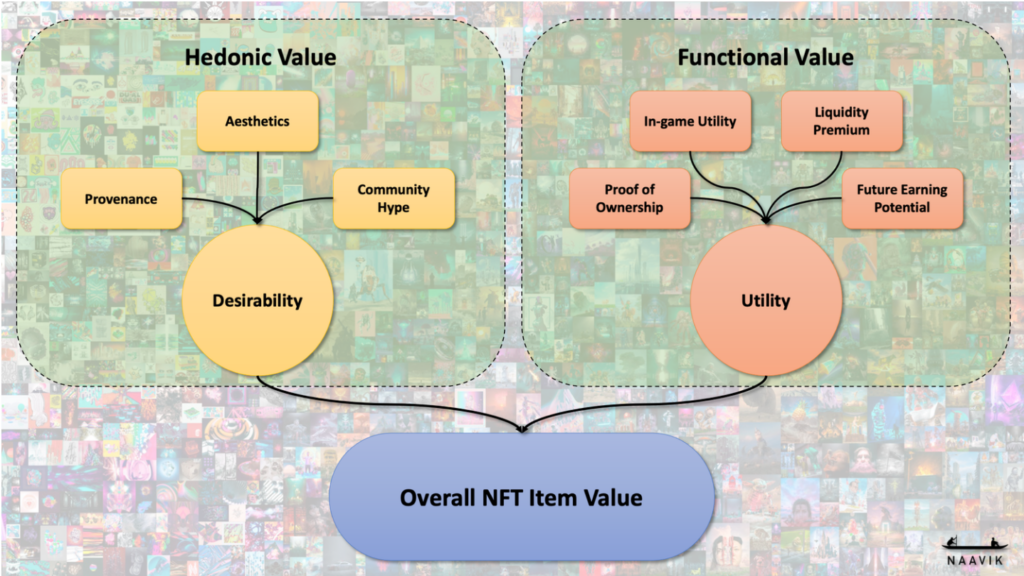
Value can be a fuzzy concept in blockchain games, as so much of it is subjective. Functional value may be a bit easier for players to parse out but could also change over time as your game’s meta evolves. Hedonic value, too, can shift with changes in social trends and player attitudes. This can be problematic, as tokens can see major swings in price based on development decisions or community sentiment. Building in additional layers of abstraction, such as the dual token model referenced above, can help to weather some of these economic shifts.
A further layer can be added by tokenizing inputs, rather than finished goods. This more evenly distributes the balance of power between those with large bankrolls pursuing a “pay-to-win” approach and others focused on mastering strategy, optimizing for certain jobs-to-be-done (e.g. crafting, farming, etc.), and/or developing elite competitive skill.
Building a sustainable blockchain game economy can be complicated, especially if you are new to web3. Unfortunately, unlike in traditional games, it is much harder to test and iterate on your game’s economics in a live environment. For this reason, it is critical that your team devote significant time and energy to getting this right. Working with experts such as those at Forte or Naavik – especially if your team is brand new to web3 – can go a long way towards preventing future headaches.
Additional Reading:
- Axie Infinity: Infinite Opportunity or Infinite Peril (Naavik) - Link
- What is Tokenomics? (Decrypt) - Link
- Tokenomics: How to Design Economies for Crypto Games (Department of Play) - Link
- Are Sustainable Play-To-Earn Economies Possible? (The Metacast) - Link
- A Novel Framework for Reputation-Based Systems (Andreesen Horowitz) - Link
Question 4: Is Your Web3 Game’s Infrastructure Built to Enable Success?
Now that you’ve thought through how your game’s design mechanics and economic systems will interface with web3, you have the proper context to tackle what may be the most important infrastructure decision you will make in your blockchain gaming endeavor: which blockchain(s) to use.
Something that you will quickly realize when researching this topic is that there are a plethora of options available:

It’s easy to get overwhelmed, especially if you do not have a technical background. Not only will you need to navigate the many blockchain options (referred to as Layer-1s), but there are also so-called Layer-2 solutions: optimistic rollups, zero knowledge (ZK) rollups, as well as sidechains and many other protocols, products, and technical solutions to explore.
Exploring all of these topics exhaustively is beyond the scope of this piece (though you’ll find additional resources at the end of this section). However, there is a more straightforward way to approach this decision without getting lost in a sea of technical documentation: the Scalability Trilemma.
The Scalability Trilemma

The Scalability Trilemma dictates that engineers working with the blockchain may only choose two of three available options: blockchains that are scalable, blockchains that are secure, or those that are decentralized. Each Layer-1 blockchain makes trade-offs between these three focus areas. This can be a helpful lens for you to examine your game’s infrastructure through. Do you expect to have a large volume of transactions happening on chain, or a low number of high value transactions? Perhaps you prefer a blockchain with more validation nodes that offers greater censorship resistance?
To illustrate the importance of considering these trade-offs carefully, let’s review a bit of blockchain gaming history: the case of the very first web3 gaming success, CryptoKitties.
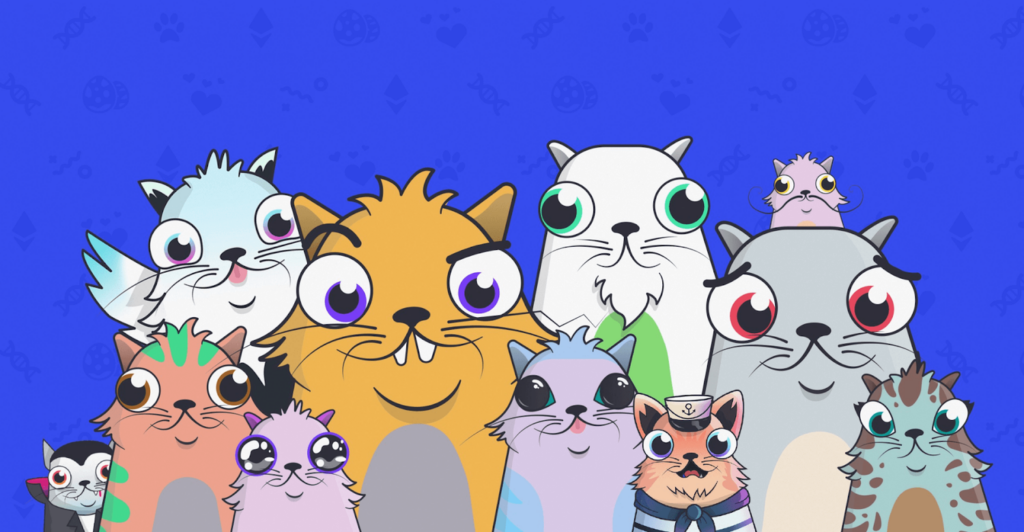
Spun out of Canadian VC and incubator Axiom Zen, CryptoKitties was created by the team that would go on to become Dapper Labs (of NBA Top Shot fame). Though the game was little more than a virtual pet simulator akin to Neopets, it quickly became a viral sensation. Faced with unexpected success and a surge of transactions, CryptoKitties began to cause major congestion on the Ethereum blockchain upon which the game was built, leading to huge spikes in gas fees and long transaction processing times.
This prompted many outside observers to question the long term viability of the Ethereum blockchain. After all, there were plenty of non-gaming applications vying for that same blockspace, and it didn’t really make sense for users to be paying hundreds of dollars to breed digital kittens. As a result, the team pivoted to develop its own purpose-built blockchain called Flow, which is now also being utilized by NBA Top Shot and other Dapper Labs creations. According to its website, Flow “was explicitly designed to support games and consumer applications…with the throughput necessary to scale to millions of active users.”
Alternate L1s & L2s
Despite Ethereum’s dominance as a foundational Layer-1, incidents such as those caused by CryptoKitties have raised questions about its viability as a solution for blockchain gaming. This has resulted in two divergent solutions: Alternate Layer-1s and Layer-2 solutions (or “L1” and “L2”, colloquially).
Alternate L1s are those seeking to compete with Ethereum and Bitcoin directly as the dominant L1 protocol. These may not be purpose-built for gaming, but offer many of the features that game developers would want, such as greater transaction throughput or faster processing speed. Examples here include Solana, Avalanche, and Tezos, to name just a few.
Of course, with more and more L1s comes an ever-more-fragmented market of users. Some developers have preferred sticking with the more widely adopted L1s and the established base of users and builders already taking part in those networks. This has led to the rise of Layer-2 solutions that work alongside the main blockchain, processing data and transactions at higher throughput off-chain while taking advantage of the security and immutability of the Layer-1. This is handled in a variety of ways, such as bundling transactions together (“rollups”) or virtualizing assets prior to transacting (“channels”). Prominent examples of L2s used in gaming include Polygon, Immutable X, and Arbitrum.
Yet another type of L2 solution is the sidechain, a smaller blockchain built to work in parallel to the L1 main chain to improve efficiency and expand functionality. Ronin, a solution created by the developers behind Axie Infinity, is one such example of this.
Building for Interoperability
This brief overview only scratches the surface of the many technical considerations that go into architecting your web3 game’s infrastructure. Fortunately, your studio doesn’t necessarily need to invest in building its own blockchain anymore. Today, there are numerous L1 and L2 solutions to choose from, many of which are mentioned above. Furthermore, you don’t have to limit yourself to just one blockchain, either.
Building for interoperability across chains may end up being the best long-term decision for your game. As the technology becomes increasingly commoditized and meaningful player communities rally around several different chains, the advantages of having infrastructure in place to support NFTs, wallets, and transactions from multiple blockchains will allow for greater flexibility in other areas of your games business, such as user acquisition, fundraising, and UX.
Even in a multi-chain scenario, however, you’ll want to consider the state of the developer ecosystem around the blockchains that you choose to support. Chains like Ethereum have been used as the basis for so much development now that best practices have begun to emerge and developers can onboard much more quickly to coding in Solidity (the Ethereum coding language) than they might be able to on some of the less widely adopted blockchains. In fact, Ethereum is so entrenched at this point that many competing blockchains now compile their code down to be compatible with the Ethereum Virtual Machine, piggybacking off the existing Ethereum developer ecosystem to kickstart their own community building. Other ecosystem concerns to think through involve the robustness of smart contract functionality for each blockchain, the availability of supporting developer tools, and the quality of documentation and support available to developers.
Regulatory Concerns & Wallet Infrastructure
When dealing with potentially large sums of cryptocurrency, you’ll want to ensure that you don’t run afoul of regulators. Depending on your game’s economic structure, your business may require a money transmitter license, which comes with its own set of requirements in the form of licenses, fees, verifications, and so on, which will vary from state to state and country to country. Furthermore, there are requirements relating to the international standards for anti-money laundering and combating the financing of terrorism (commonly referred to as AML/CFT). This is where working with an experienced partner like Forte can be extremely valuable.
One major component of many AML/CFT standards globally is the set of so-called “Know Your Customer” (KYC) regulations. This can be a difficult proposition when dealing with cryptocurrencies, as regulatory risk profiles are often based on identity verification - something that many crypto natives shy away from, preferring to stay anonymous instead. However, KYC should not be overlooked. Nearly $1B in fines were assessed in the first of half of 2021 alone.
One potential solution to this is to address KYC issues at the primary access point to your game’s economy: the digital wallet.
In the same way that web browsers became users’ portals to web2, so too will digital wallets interface with web3. As such, it is worth carefully considering the user experience of accessing and interacting with your blockchain game’s economy via digital wallets. If your project has aspirations of attracting new gamers to web3, rather than appealing to existing blockchain gamers, then your team will need to think through the onboarding experience carefully, as your choice(s) of wallet provider may be the very first digital wallet that your players have ever interacted with.
Building your own bespoke digital wallet is one possibility, though it may not be required as the technology becomes increasingly commoditized. Axie Infinity is one example of a game that chose to build its own digital wallet, though Sky Mavis (the game’s developers) likely made that decision in conjunction with the decision to also build their own blockchain (the aforementioned Ronin).

Your team might also opt to enable connections to established wallets such as MetaMask, Rainbow, Phantom, or even allow players to transact in their local currency with services like Ramp. Yet another option could be to hold crypto assets in custodial wallets on your players’ behalf until they are ready to transfer them to their own wallets, similar to how Robinhood or Coinbase treat cryptocurrency transactions.
Regardless of how your business chooses to approach this set of issues, the important takeaway here is that game economies are no longer confined to the bounds of the game itself when operating in web3. They are now connected to the broader IRL economy, and as such require thoughtful deliberation and consideration around risk and liability.
The many topics outlined above should give the engineers and technical directors on your team the information they need to address any technical concerns relating to your project’s choice of blockchain(s). However, there are also additional business considerations to evaluate when making this decision, which leads us to our final foundational question.
Additional Reading:
- Crypto Canon (Andreesen Horowitz) - Link
- The Inside Story of the CryptoKitties Congestion Crisis (Consensys) - Link
Question 5: Is Your Web3 Business Built for Long-term Success?
Now that you’ve thought through the many philosophical, technological, economic, and design-oriented considerations that go into creating a blockchain game (phew!), it’s time to evaluate the business viability of your foray into web3. To do so, we are going to cheat a little bit and break this up into three additional related questions:
- How to raise capital in web3?
- How to allocate capital in web3?
- How to preserve capital in web3?
How to raise capital?
If you’ve been following games industry fundraising recently, you’ll know that capital has never been more readily available for viable web3 gaming ventures. Huge sums have been invested into blockchain gaming studios, token offerings, guilds, DAOs, infrastructure providers, and everything in between.

Traditionally, games industry funding has come from three primary sources: angel investors, venture capitalists, and strategic investors. However, the decentralized nature of web3 has opened up a variety of new avenues for fundraising.
The most prominent example of this has been the public sale of tokens, both fungible and non-fungible. Countless examples of this are happening every day on Opensea, Twitter, and Discord, representing a broad spectrum of intent ranging from legitimate attempts to innovate and experiment to outright grifts and scams. This new approach to attracting investment has functioned as a sort of web3 crowdfunding mechanism, similar to the Kickstarters or Indiegogos of web2. It also relies on the same one-sided trust factor: the hope that the project’s organizers will actually deliver a game after raising all that money. Given the current lack of knowledge and best practices in this space, there is real risk to operating in this manner simply by way of association.
The subject of raising money for an in-development games project via NFT sales is deserving of an entire article in and of itself. Luckily, there are great case studies happening seemingly every day. One of the most successful ongoing examples of this can be seen in Star Atlas, a space-themed grand strategy game being built on Solana. Aspiring Star Atlas players can purchase a variety of ships, structures, and collectibles on the game’s first-party marketplace. Interested parties can also invest directly in the game’s governance token, $POLIS, on secondary exchanges. These tokens all have promised value in the final product, whenever it is finally released (the game was first announced in early 2021). Despite not having a playable product, the team appears to have been quite successful in its fundraising efforts. The game has raised millions of dollars in this manner, including $3M from Animoca Brands alone during September’s “Galactic Asset Offering”.

This is just one example though, and there are countless other ways to execute this sort of strategy in a manner that suits your project. Selling NFTs has been one of the most common approaches to funding at this stage of development, but fungible tokens have also been utilized. Many projects have opted for an Initial Coin Offering (ICO) or Initial DEX Offering (IDO) as part of their fundraising mix.
However, if you’d prefer to go a different route, there is another new source of capital available to aspiring web3 game developers. This money comes from a cadre of incubators, accelerators, and ecosystem growth funds. These might be considered a form of strategic investment, as the goal of these funds is typically to grow their chosen ecosystem, whether it be web3 gaming generally or a specific blockchain or infrastructure solution.
Here again we return to the choice of which blockchain(s) to support. The availability of grants for operating within a specific blockchain’s ecosystem may meaningfully impact your infrastructure decisions. Solana, Binance Smart Chain, Avalanche and Polygon are among the many blockchains, sidechains, and technology providers that have raised funds dedicated to investing (either entirely, or in part) in web3 gaming projects. Of course, Forte is an investor as well, having first partnered with Ripple on a $100 million fund and more recently having partnered with Solana Ventures and Griffin Gaming to invest $150 million into helping make blockchain games go mainstream.
Additionally, web3 games operators should consider the future viability of these technologies and how heavily they want to invest in single-chain vs. multi-chain approaches. Some blockchains may see network effects and increased future adoption, which may impact your team’s calculations around your project’s total addressable market (TAM). Ask anyone that’s ever worked in games demand planning or been tasked with building a cohorted retention model about the importance of a wide top-of-funnel and you’ll quickly realize how changes in your game’s TAM can impact the long-term viability of the business.
How to allocate capital?
Once you’ve secured funding for your project, you’ll need to pivot to allocating those funds effectively across your organization and ecosystem. Many token-based projects have set allocations for different stakeholder groups – play-to-earners, the team, the community, early investors, etc. – that vest over time, and making sure that all stakeholders are fairly represented is important to ensuring long-term success. While there are many stakeholders to consider, for the scope of this essay let’s narrow in on the core team.
The first and likely largest line item on your team’s budget to consider is your cost to hire and retain talented game developers. It is no secret that there has been an exodus of gaming talent into web3 companies in recent months, as well-funded blockchain gaming startups seek to scale rapidly. However, blockchain gaming has not yet approached the scale of traditional gaming, and we have already discussed the proliferation of funding into new games ventures. What this means for your business is that it will face extreme competition for talent on three fronts: fellow blockchain games companies, existing traditional games companies, and new games entrepreneurs. Game development skills are going to be in high demand, so your ability to allocate funding effectively – both to salaries and to employee retention initiatives – will play a large role in your ability to succeed in web3.
While we’re on the topic of employee retention, it’s worth examining the current working environment for game developers. The majority of gaming companies are still operating in a pandemic-induced remote work setup, which we might consider as a form of “distributed” games development. Web3 projects have taken this a step further by not only allowing remote work, but also allowing pseudonymous work. Many web3 initiatives are run by teams of people that don’t know each other’s real names. Taking this a step further, these employees and contributors are not compensated through standard direct deposits into a checking account, but are rather paid in cryptocurrencies. Given that these are departures from the status quo in the games industry, your business will want to consider how to handle these sorts of employment situations before interviewing candidates in earnest.
While we have devoted much of this exploration to roles in Design, Product, and Engineering, we would be remiss to not touch on the importance of Marketing (particularly via social media and influencer partnerships) and Community Management. These functions play a critical role in raising awareness to your project and nurturing a healthy, supportive community. We have already discussed the impact that groups of misaligned players can have on your game’s business, and it is for this reason that investment in quality marketing and community management professionals is critical. At its core, web3 is community-driven. If your community is not aligned with your game’s vision, it will be difficult to scale to new audiences.
Perhaps one of the most important new audiences to be aware of as a marketer or business leader is the growing group of DAOs and gaming guilds. The largest among these, such as Yield Guild Games, have scaled to the point that they can almost act as kingmakers, bringing significant attention and an active player base to projects that they choose to support. Getting the attention of DAOs and gaming guilds can bring a huge influx of players and investment to your project, but be forewarned: the players are also incredibly well-informed and savvy to web3, so any issues or perceptions of impropriety will be quickly sussed out and disseminated among their ranks. As such, before promoting your game to these groups it is important that your team is prepared, your roadmaps and whitepapers are buttoned up, and your leadership is in consultation with experts – either within the groups you’re hoping to work with, or with outside partners like those at Naavik and Forte.
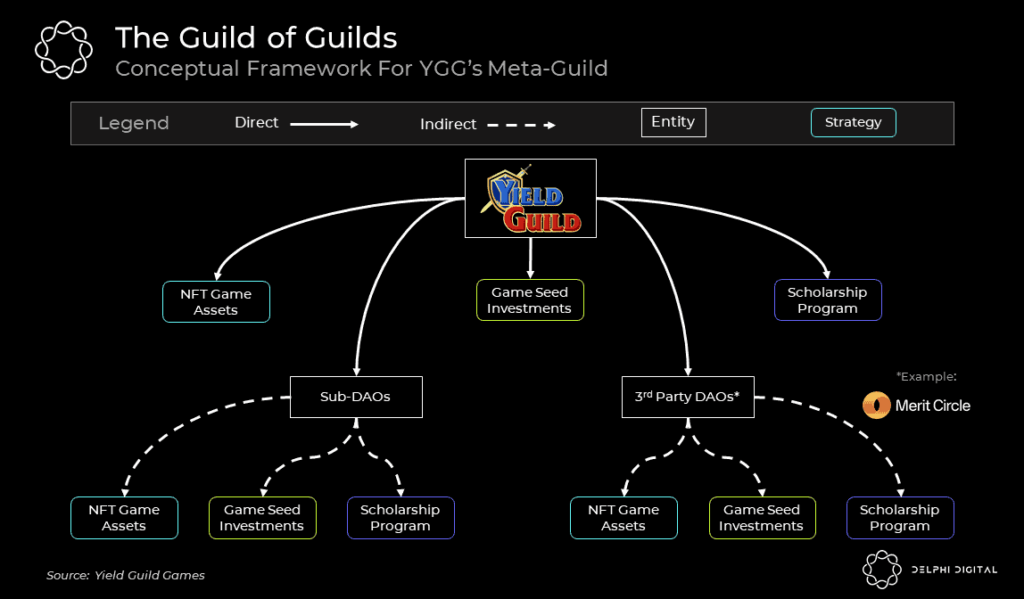
How to preserve capital?
Once your project is up and running, the final piece of the puzzle is to maintain momentum and avoid self-inflicted mistakes. The most common pitfalls to be avoided at this stage are regulatory and compliance related.
Generally speaking, web3 has already been the subject of intense scrutiny and significant backlash from outsiders and skeptics. The space has numerous PR obstacles still to overcome, as there are far too many scams and security risks for the average non-crypto native consumer to feel comfortable trusting their hard-earned funds to relatively unknown projects. As such, it is imperative that your games business instill a sense of trust among its prospective audiences.
One way to do so is to be clear and transparent in your operations. Educate your players on common scam tactics and how to protect themselves. Ensure investors that your organization will not disappear overnight by emphasizing the measures that you have taken, such as complying with the AML/CFT regulations outlined above. Finally, over-index on communication. Involve your community in discussions, listen to their feedback, and be clear about steps that your team is taking to address their concerns.
In this same vein, another avenue that your organization may be interested to explore is decentralized governance. Some web3 gaming organizations, such as Decentraland, have structured themselves as DAOs in order to share governance decisions with their broader community. As with blockchain gaming broadly, there is a spectrum of decentralization that your organization can explore, from none whatsoever all the way to full decentralization. Some have advocated for a “progressive decentralization” format, where products or organizations relinquish control of more aspects over time to the community.
Whatever you decide, ensure that you have a sound plan for extending your project’s financial runway as long as possible. Crypto markets can be extremely volatile, and much of blockchain gaming has still yet to be defined. Your blockchain game’s revenue model may be quite different from that of a traditional F2P mobile or premium PC/console title. Be wary not to spend your fresh fundraising too quickly with so much still undecided.
Additional Reading:
- Gaming DAOs: A New Way of Coordinating Gaming Communities (Naavik) - Link
- Dawn of the Guilds: Settlers of the Metaverse (Delphi Digital) - Link
- Forte’s PTI gets financial transaction licenses for blockchain games (VentureBeat) - Link
- Progressive Decentralization: A Playbook for Building Crypto Applications (Andreesen Horowitz) - Link
- A Guide to Designing Effective NFT Launches (Paradigm) - Link
Let’s Build!
As you can see, the blockchain gaming rabbit hole goes very deep, and in many different directions. We’ve really only scratched the surface of what’s possible, and by this time next year the landscape will almost certainly look much different.
There is still so much room for blockchain gaming organizations to innovate and experiment. Don’t be afraid to reach out for help, either. There are a wealth of resources available from Naavik, Forte, and other leaders in the space, and the web3 community on the whole is incredibly welcoming to newcomers seeking to genuinely improve blockchain gaming for all.
We can’t wait to see what you build!
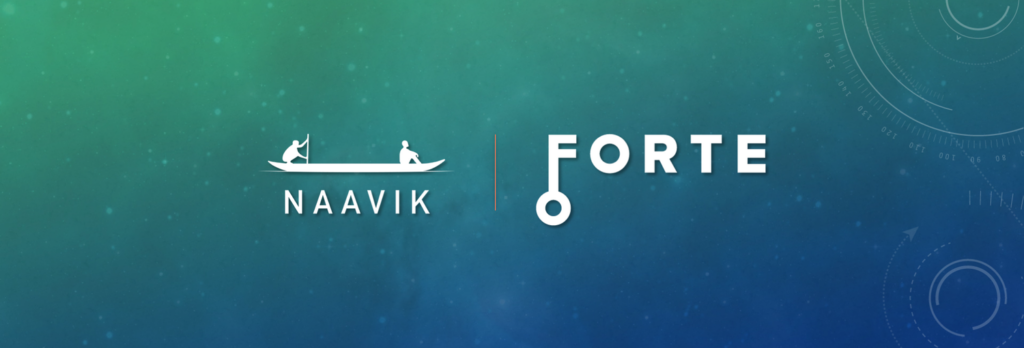
To learn more about how Forte's platform can help your team better build and manage blockchain games — from compliance and liquidity to in-game wallets and marketplaces — check out Forte's website. Plus, feel free to contact the team with any inquiries.
Also, make sure to subscribe to Naavik Digest below to stay up to date on upcoming future essays in this series, plus all of our best content. And if you want even more — ongoing premium game deconstructions, research essays, and market updates — make sure to check out Naavik Pro.




